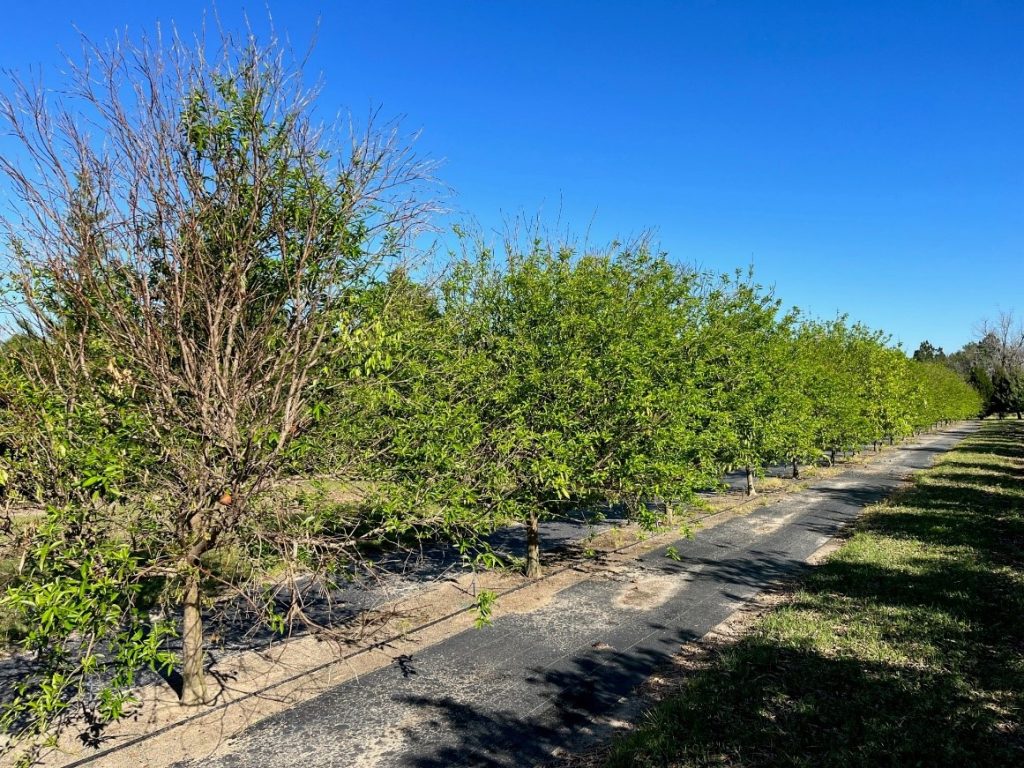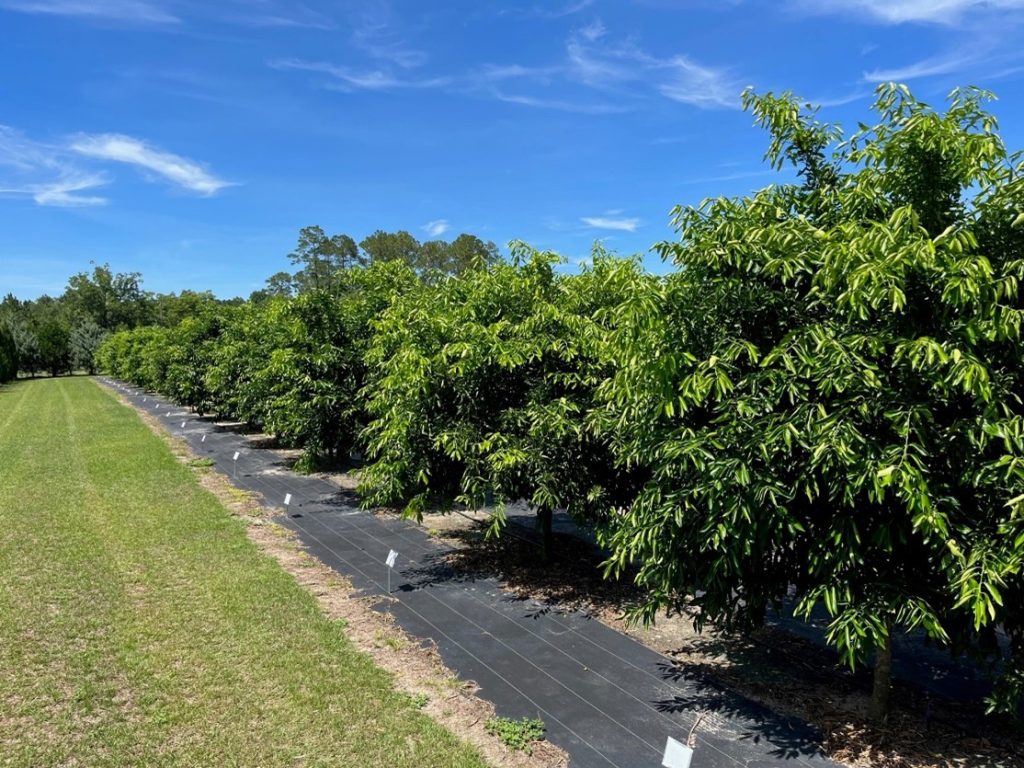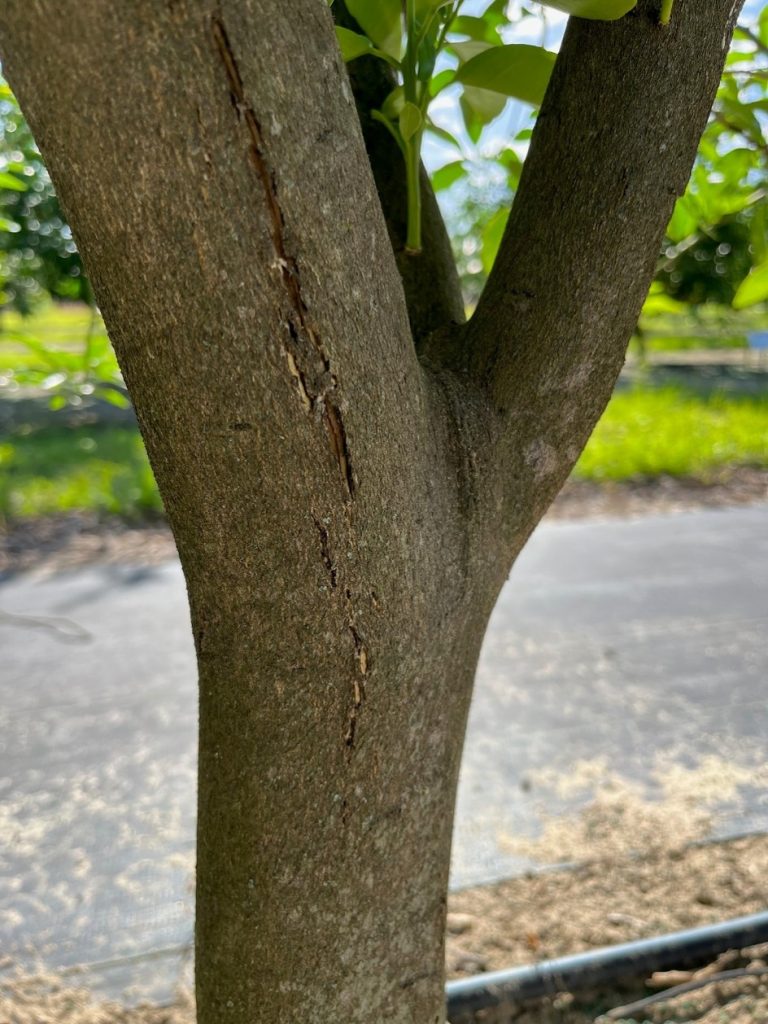
Now that the dust has somewhat settled and the Sugar Belles have put on the first flush of foliage (Fig. 1), after being mostly defoliated it is apparent that there are freeze damage differences between the trees on 4 different rootstocks. The trees are snuggly located between windbreaks to the west and north and are protected by 4 rows of trees to the east. All 20 trees have rebounded after having no freeze protection but there are difference in wood damage and bark splitting.

The Sugar Belle row consists of 20 trees on 4 rootstocks with 5 repetitions (Fig. 2). The rootstocks are US-897, US-942, Rubidoux, and US-852. I have pruned out the dead wood and measured the diameter of the largest limb removed from each tree. Trees on US-852 had the largest diameter limbs removed and Rubidoux had the smallest limbs removed. I also estimated the percentage of canopy that was lost. US-852 lost the most canopy while trees on Rubidoux lost the least canopy.

I also recorded the percentage of trees with bark splits (Fig. 3) due to the freeze on the trunks and major limbs. Sixty percent (3 of 5) trees on 852 had bark split on the trunk and 100% (5 of 5) had bark split on the major limbs. Rubidoux had no bark splits on the trunk or limbs. From these results it would appear that Rubidoux does increase the cold-hardiness of Sugar Belle trees more than the other rootstocks. US-942 would be second best, US-897 next, and US-852 had the most damage. The rootstock, US-852 is a hybrid between a large flowered Poncirus trifoliata and a Changsha. That combination would make one think this rootstock would increase cold-hardiness and be a good rootstock for Georgia but that was not the case in this situation. US-852 is a rarely used rootstock because about 50% of the seed is not true to type meaning about half of the seeds are not clones of the parent. In most other rootstocks, over 90% of the seeds are true to type. This Sugar Belle row at our Valdosta research plot was planted in 2018 and is a small sample size, but this information may be helpful to growers wanting to plant Sugar Belles and trying to decide on a rootstock. The table below shows the data discussed above. There is a chance more limbs could die and alter this data but as of April 10 this is what we know.
| Rootstock | Bark Split on Trunk % of trees | Bark Split on Limbs % of trees | Diameter of Largest Dead Limb in inches | % of canopy lost |
| Rubidoux | 0 | 0 | .28 | 9 |
| US-942 | 0 | 40 | .55 | 11 |
| US-897 | 20 | 80 | 1.06 | 24 |
| US-852 | 60 | 100 | 1.6 | 29 |